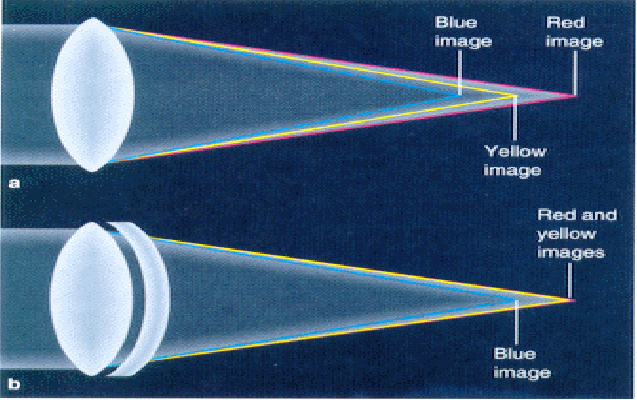Chromatic aberration is a type of distortion in which there is a failure of a lens to focus all colours to the same convergence point. It occurs because lenses have a different refractive index for different wavelengths of light. The refractive index decreases with increasing wavelength.
Chromatic aberration manifests itself as "fringes" of colour because each colour in the optical spectrum cannot be focused at a single common point on the optical axis.

Since the focal length of a lens is dependent on the refractive index n, different wavelengths of light will be focused on different positions. Chromatic aberration can be both longitudinal, in that different wavelengths are focused at a different distance from the lens; and transverse or lateral, in that different wavelengths are focused at different positions in the focal plane (because the magnification of the lens also varies with wavelength) illustrated in diagram (a) above.
It can be minimized by using an achromatic lens or achromatic, diagram (b) above in which materials with differing dispersion are assembled together to form a compound lens. The most common type is an achromatic doublet, with elements made of crown and flint glass. This reduces the amount of chromatic aberration over a certain range of wavelengths, though it does not produce perfect correction. By combining more than two lenses of different composition, the degree of correction can be further increased, as seen in an apochromatic lens or apochromat.
Many types of glass have been developed to reduce chromatic aberration, most notably, glasses containing fluorite. These hybridized glasses have a very low level of optical dispersion; only two compiled lenses made of these substances can yield a high level of correction.